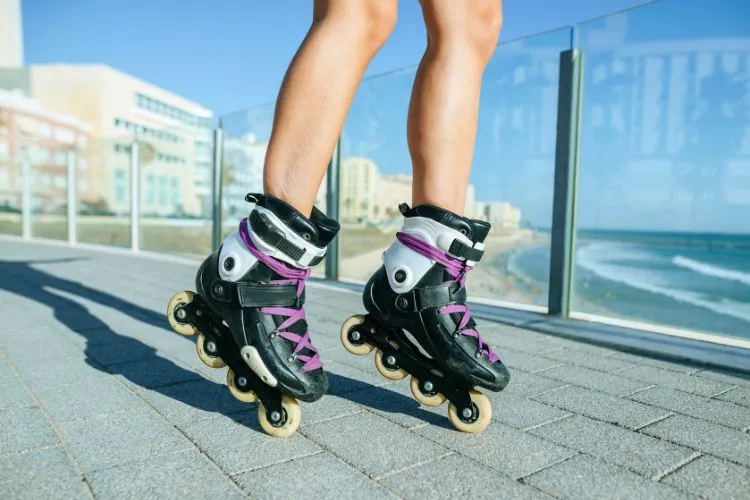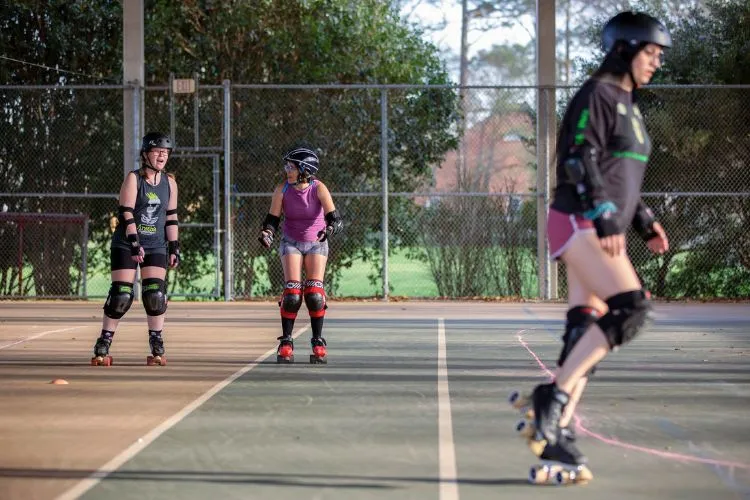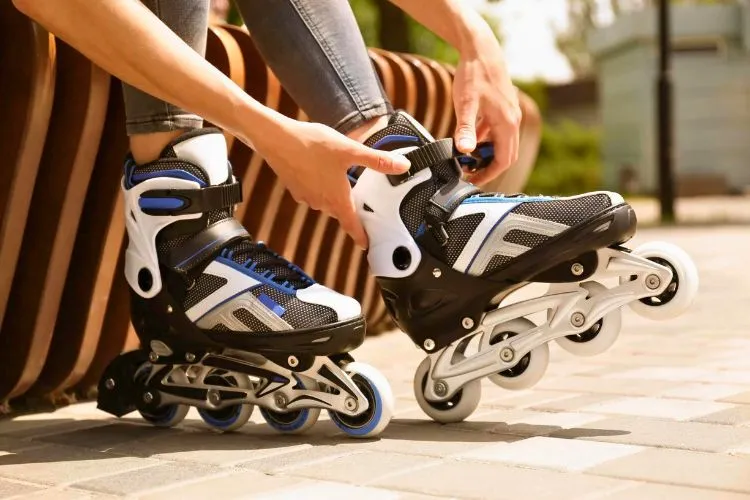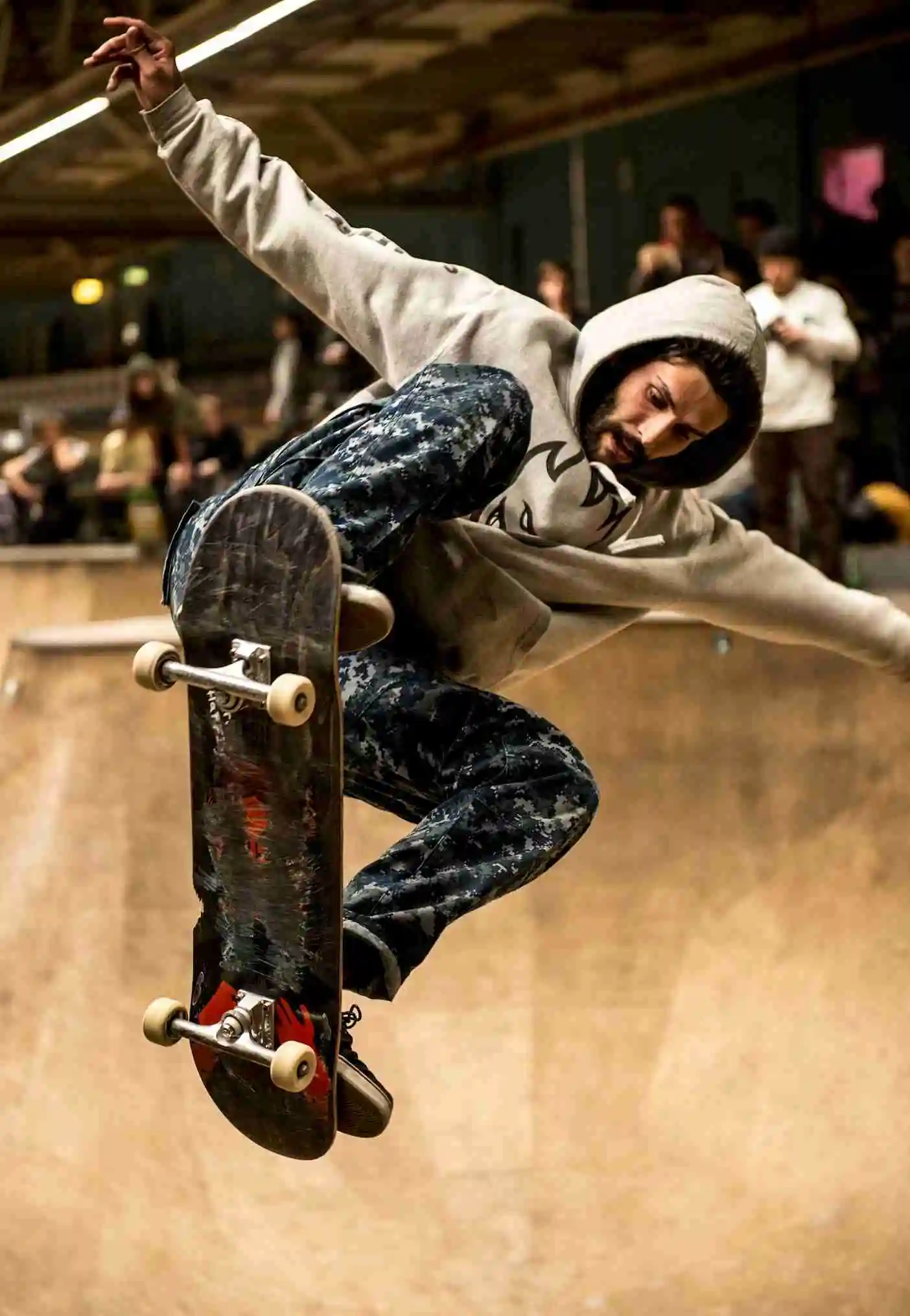Roller skating is a fun and popular activity enjoyed by people of all ages around the world. But beyond the joy of gliding and grooving on wheels, many people overlook the significant health benefits of this aerobic exercise, including its effectiveness in working multiple muscle groups.
Understanding what muscles does roller skating work is crucial for anyone looking to improve their technique or simply get the most out of this activity as a form of exercise.
Let’s delve into the specific muscles that roller skating targets and how knowing this can enhance your skating experience.

What Muscles Does Roller Skating Work?
Core Muscles
A strong core is essential to roller skating. It anchors your body, enabling better balance and contributing to the smoothness of your movement. The principal muscles here include the rectus abdominis, obliques, and the erector spinae, which is a group of muscles that run along your spine.
As you maintain your skating posture, your core muscles work to stabilize your midsection. This keeps you upright and allows for more efficient leg movement.
To further improve core strength, skaters can practice regular exercises such as planks, crunches, and twists. These will translate to better stability and power on skates.
Lower Body Muscles
Roller skating is an exceptional exercise for the lower body. It requires a continuous, repetitive motion that leads to strength building and toning.

Thighs
Let’s start with the thighs, home to some of the most powerful muscles in the body. As you skate, your quadriceps, which are on the front of your thighs, help with the straightening of your legs.
Conversely, the hamstrings, on the back of your thighs, are engaged when you bend your knees. Strengthening these muscles can be beneficial both on and off the rink.
Glutes
Your glutes, or buttock muscles, come into play when you push off for movement. Each stride engages these muscles, contributing to a toned and strengthened backside.
Calves
Then we have the calves, which are crucial for pushing off and maintaining control in roller skating. They also aid in stopping and starting, playing a big role in agility.
Training for these muscles doesn’t require complicated gym equipment. Simple squats, lunges, and calf raises performed consistently can significantly boost strength in these key areas.
Upper Body Muscles
While the lower body does a lot of the heavy lifting in roller skating, the upper body also plays a vital part in the process. Skating engages your deltoids, pectorals, and the muscles in your upper and lower back.
These muscles help you maintain posture, balance, and even contribute to propulsion with arm swings. Skaters can develop upper body strength with exercises like push-ups, pull-ups, and rows. A well-rounded workout routine that includes these exercises can lead to better skating performance and physique.
Balance and Coordination
Balance and coordination are critical components of roller skating. While these aren’t muscles, they are abilities refined by the support of several muscles.
Skating requires constant adjustment to maintain balance, which works a variety of stabilizer muscles throughout the body. In turn, these muscles help to solidify your skating technique and prevent falls.
Flexibility and Range of Motion
Flexibility is another key aspect of roller skating that affects muscle work. The more flexible you are, the greater your range of motion, which allows for longer, more powerful strides. Regular stretching not only helps prevent injury but also ensures that all the muscles work together efficiently.
Safety Tips
Safety is paramount when engaging in an activity like roller skating. Proper form is the first line of defense against potential injuries.
What’s more, warming up and cooling down with dynamic and static stretches, respectively, prepare your body for the physical demands of skating and aid in muscle recovery afterward.
Gear Selection and Maintenance
Choosing the appropriate roller skates is pivotal for optimizing muscle use and enhancing skating efficiency. Skates come in various styles, catering to different activities such as speed skating, artistic skating, or outdoor recreational skating.

Selecting a boot with the right support and a comfortable fit can prevent injuries and improve performance. Likewise, the choice of wheel hardness and bearing quality affects agility, speed, and stability. Safety gear, including helmets and pads, is vital for protection.
Regular maintenance such as cleaning bearings, inspecting straps, and checking wheels for wear ensures your equipment functions safely.
Properly maintained gear not only extends the lifespan of your skates but also promotes a smoother, safer skating experience, allowing you to focus on technique and enjoy the ride.
You may also find useful: How Much Do Roller Skates Cost?
Frequently Asked Questions (FAQs)
Is roller skating good for toning muscles?
Yes, roller skating is great for toning muscles, especially in the lower body. Regular skating can help build and define the quadriceps, hamstrings, glutes, and calf muscles.
How often should I roller skate to see physical fitness improvements?
Skating 2-3 times a week can lead to noticeable improvements in muscle tone and cardiovascular fitness. As with any exercise, consistency is key.
Can roller skating help with weight loss?
Roller skating can be an effective part of a weight loss regime. It burns calories, can boost metabolism, and helps build lean muscle which, in turn, aids in burning more calories at rest.
What are common injuries in roller skating and how to avoid them?
Common injuries include sprains, fractures, and cuts. Wearing appropriate safety gear like helmets, wrist guards, elbow, and knee pads, along with learning proper fall techniques can greatly reduce the risk of injury.
How can beginners improve their roller skating technique to work the right words?
Beginners can improve their technique by taking lessons, practicing regularly, and focusing on form. Exercises that strengthen the core and lower body will also contribute to better stability and control on skates.
Conclusion
In conclusion, roller skating engages a diverse group actual muscles, ranging from your core and lower body to even your upper body. Knowing which muscles are involved helps to improve your approach to the sport, resulting in better technique, more effective workouts, and increased safety.
Include strength training and stretching into your routine, and you’ll not only become a better skater but also enjoy the added benefits of this fun and rewarding exercise.

Matthew James is a passionate skater who wanted to create a platform to share his love for skating with others. With a vision to create a vibrant community of skaters, he aims to provide a space where skaters of all levels can connect, learn, and grow together.
